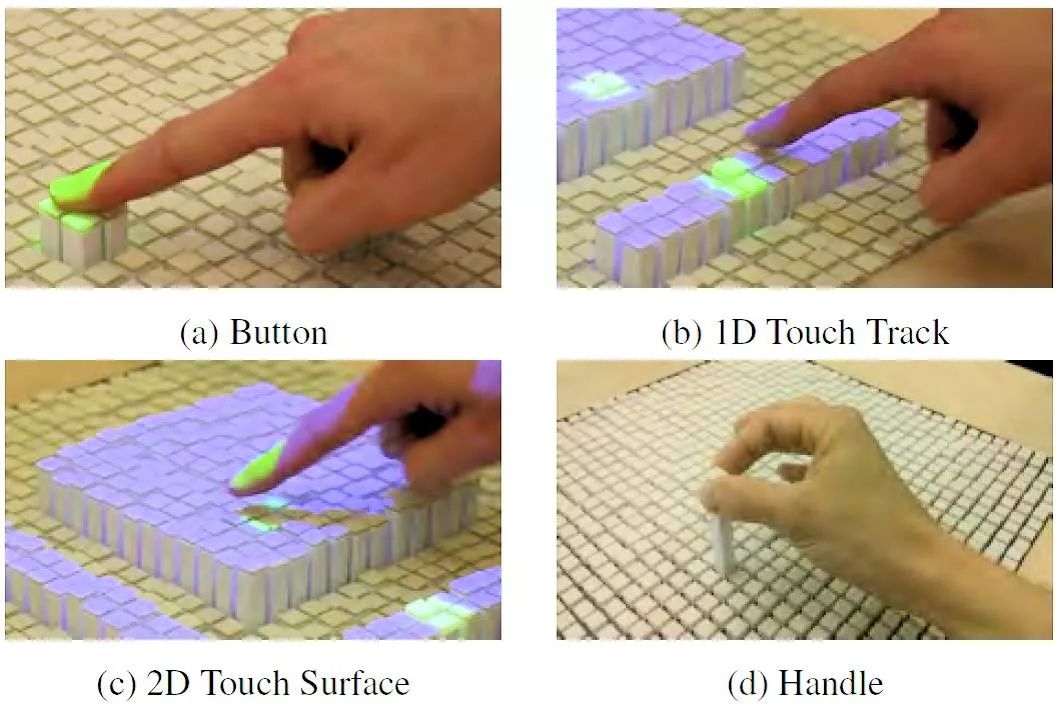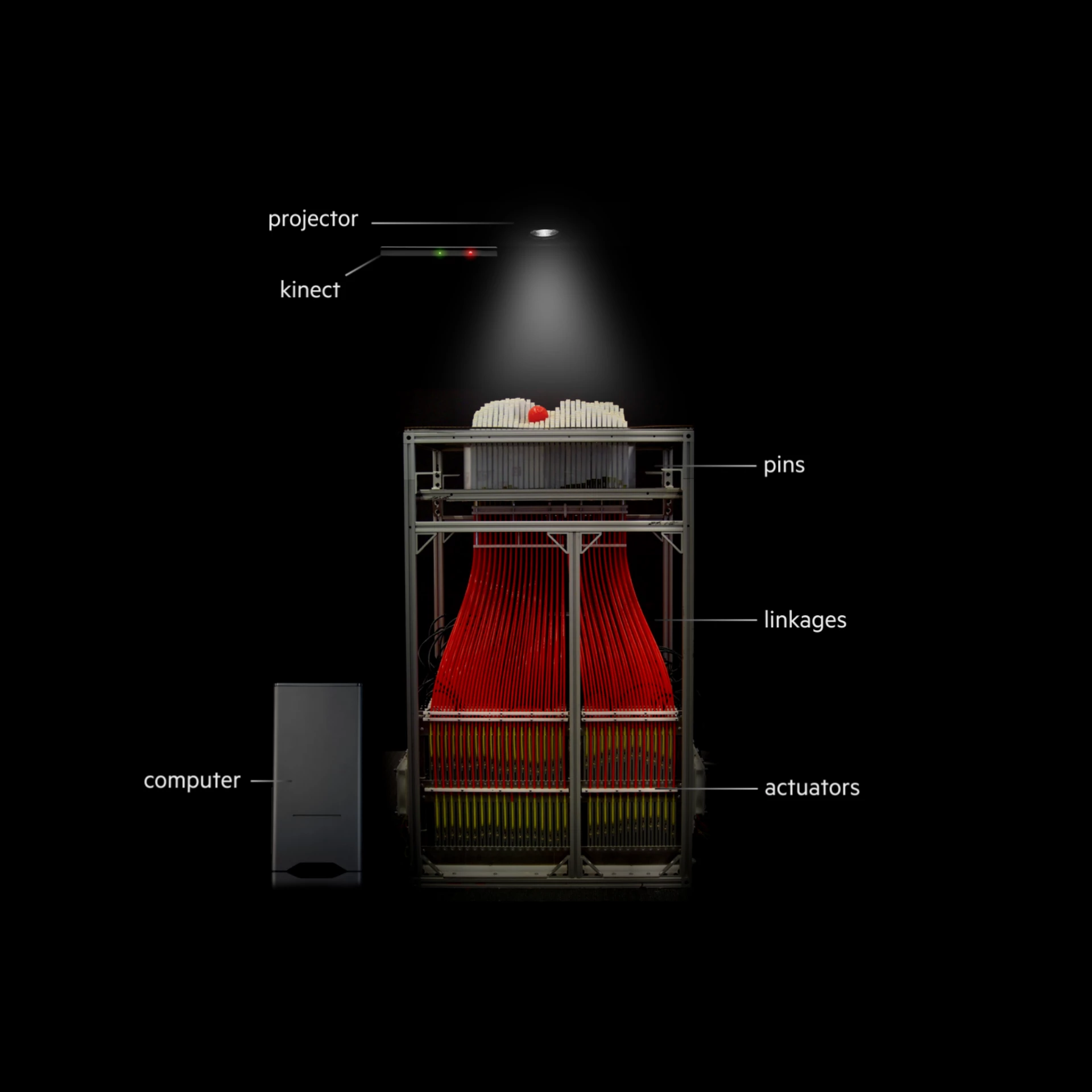The inFORM Dynamic Shape Display from MIT's Tangible Media Group allows users to interact with data with a minimum of physical barriers. It also allows users to virtually reach through a display screen, and manipulate physical objects that may be thousands of miles away. While the current version of inFORM has very limited spatial resolution, watching it in action gives one a strong impression of the potential of such devices.
The most important part of an inFORM isn't the 3D display itself. Rather, it is the coupling of a Kinect sensor and projector to extract 3D input from "watching" the movements of a user's hands. The position of a fingertip can be established to within about 2 mm (0.08 in) in the horizontal plane, and to about 1 cm (0.4 in) in height above the plane.
Enabling this form of input is common in development systems since the introduction of the Kinect late in 2010 made such sensors available at a modest cost. Newer Kinect systems come with software that includes a jointed model of an upper torso that allows apps to track the head, neck, and arms of a Kinect user.

The 3D (really 2.5D) display unit consists of a 30 x 30 grid of 1 cm square motorized polystyrene pins. The pins are separated from each other by about 3 mm, and can be moved vertically over a range of 10 cm ( 4 in). The height of each pin is controlled by a linkage connecting a pin to a linear motor controller, with the position being sensed using a linear potentiometer. Each pin can deliver a force equal to the weight of a 100 g (3.5 oz) mass.
The pins are not only adjustable by the computer to a certain height, but they can also deliver haptic feedback to a user. For example, it would be possible to display a map of an area where the height of a pin corresponds to the current population density at that position, while making the resistance of the pin to being moved from its position proportional to the rate of change of the population density.
A great deal could be said about the inFORM display, but I believe you will get more from observing it in action in the video below. The inFORM display, if nothing else, lives at the corner of fun and fashion – a place from which many of our best tools come. The future of inFORM will be interesting to follow.
Source: MIT





















